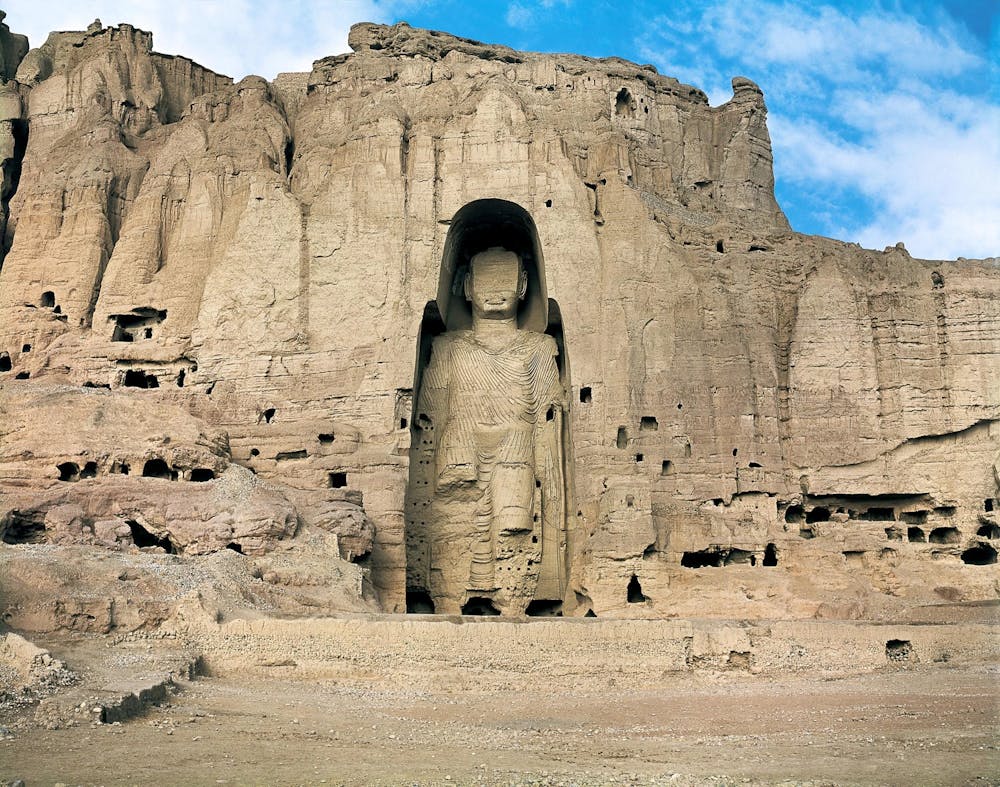After the resurgence of the Taliban in mid–August, Afghans around the country began to flee toward airports and borders in hope for an escape from the increasing human rights violations. The threat to human life, security, and freedom is immeasurable, and no freedom is too fundamental to be safe from the Taliban’s reign. Alongside the dangers faced by the Afghan people is the danger threatening the Afghan legacy, which is ensconced in archeological wonders, sculptural masterpieces, and other studied artifacts. Under the Taliban regime, in all its violence, fundamentalism, and totalitarianism, there’s an urgent and momentous danger facing the treasure trove of art and history that lives within Afghanistan’s borders.

The National Museum of Afghanistan at Kabul/ Photography by Rafiq Maqbool for AP Press.
According to experts, there's already a likelihood that the Taliban will loot historical sites to generate revenue and desecrate idols as a symbolic gesture—revealing that its promise to preserve them was nothing more than a lofty, rhetoric–masked lie. In a time of much chaos, inconsistent security at museums, lucrative excavation sites, and storage facilities may open a window for both Taliban–affiliated and third–party thieves to snag, smuggle, and sell artifacts, or for looters to destroy them. Furthermore, bombs and other crossfire threaten the integrity of the precious objects stored throughout the country.
Due to the swiftness of the Taliban’s takeover, museum staff and directors are scrambling to ensure precious collections stay safe. “We have great concerns for the safety of our staff and collections,” said Fahim Rahimi, director of the National Museum of Afghanistan. Government sources have claimed that there is no safe way to move the museum’s collection or any of the staff members out of the country due to the Taliban–controlled borders. With roughly 800,000 objects within its walls, the National Museum is full of the majority of Afghan stories, craft, and tradition through history that must be preserved through the tumult.

Taliban officials have claimed they will protect sites of important historical heritage from destruction or sale, but many are unconvinced that the organization will keep the promise because of its unfavorable record. In 2001, the Taliban blew up the world's tallest known Buddha statues, the Bamiyan Buddhas, which were carved with exquisite detail into the side of a cliff. The Taliban also destroyed artifacts from the National Museum in Kabul and pillaged ancient sites in a show of aggression and domination directed at pre–Islamic art. The Taliban government justified its actions by claiming the works were idols, making them “haram,” or forbidden, according to Islamic doctrine. The lack of respect for the artifacts, which were crafted long before Islam even existed, is disrespectful to the country’s history and legacy. It reveals that the Taliban is dangerously attempting to rewrite the past to fit its narrative, domineering history much like it is the country.
The destruction of these precious historical artifacts was condemned both nationally and internationally. Worldwide, people mourned the loss of the renowned emblems—distraught at the loss of historical culture and educational ancient artifacts. In the years since, the Afghan people have continued to hope for the protection of their birthright, which has been looted, destroyed, and disrespected over the last 40 years since the beginning of the civil war in 1978. It took years for conservators at the museum to repair and rebuild the sculptures, but the Buddhas are forever lost and the whereabouts of many valuable objects are still unknown. “We have a very glorious Islamic history that we are proud of, but we also have a rich pre–Islamic history [that] we must preserve,” said Rahimi. “It is important our youth learn about this history, this diversity, and their heritage.”

UNESCO has expressed concern over the potential damage to Afghanistan’s national heritage. In a statement released earlier this month, the organization implored the Taliban to agree to safeguard historical treasures: “Any damage or loss of cultural heritage will only have adverse consequences on the prospects for lasting peace and humanitarian relief for the people of Afghanistan.” Other organizations including the French Archeological Delegation in Afghanistan have commented on the uncertainty surrounding Afghanistan’s artifacts. Cheryl Benard, the director of the Alliance for the Restoration of Cultural Heritage in D.C., also expressed worry that the situation was growing increasingly volatile, claiming that “If [the Taliban] have bad intentions … it will become obvious down the road.”
Citizens worldwide must prioritize the crisis in Afghanistan. For art and history lovers especially, the potential loss of culture at stake should be another motivation to take action. The cultural heritage of Afghanistan is rich and should be respected, appreciated and shared with the world—not destroyed.







